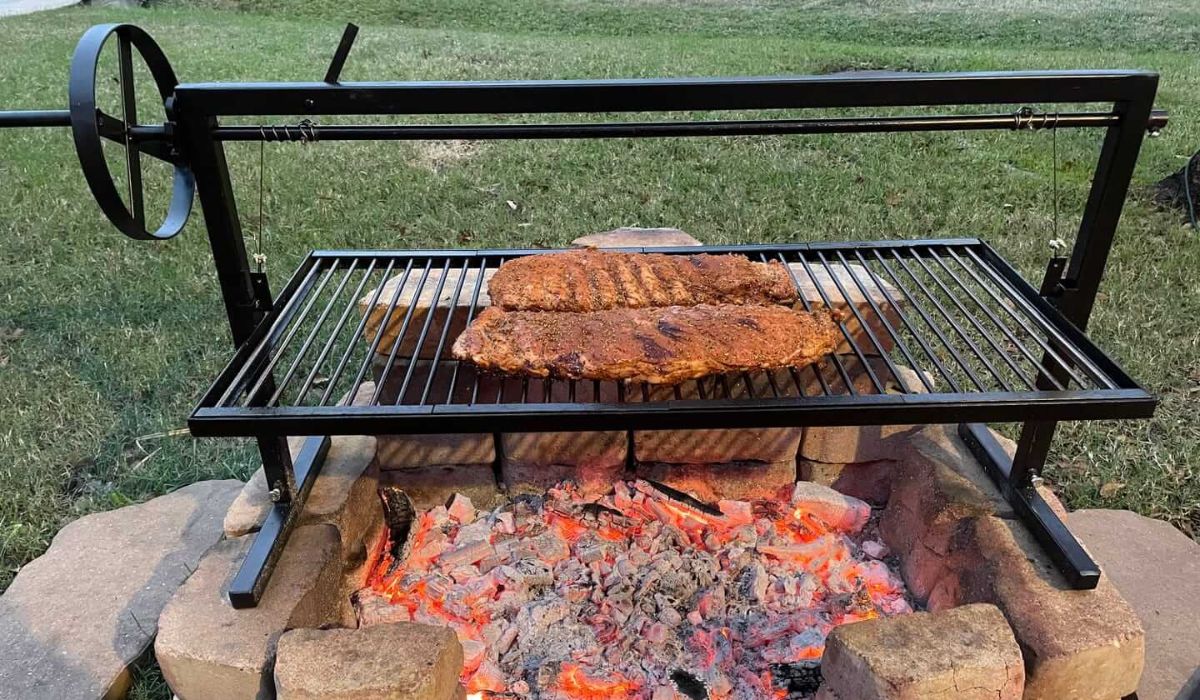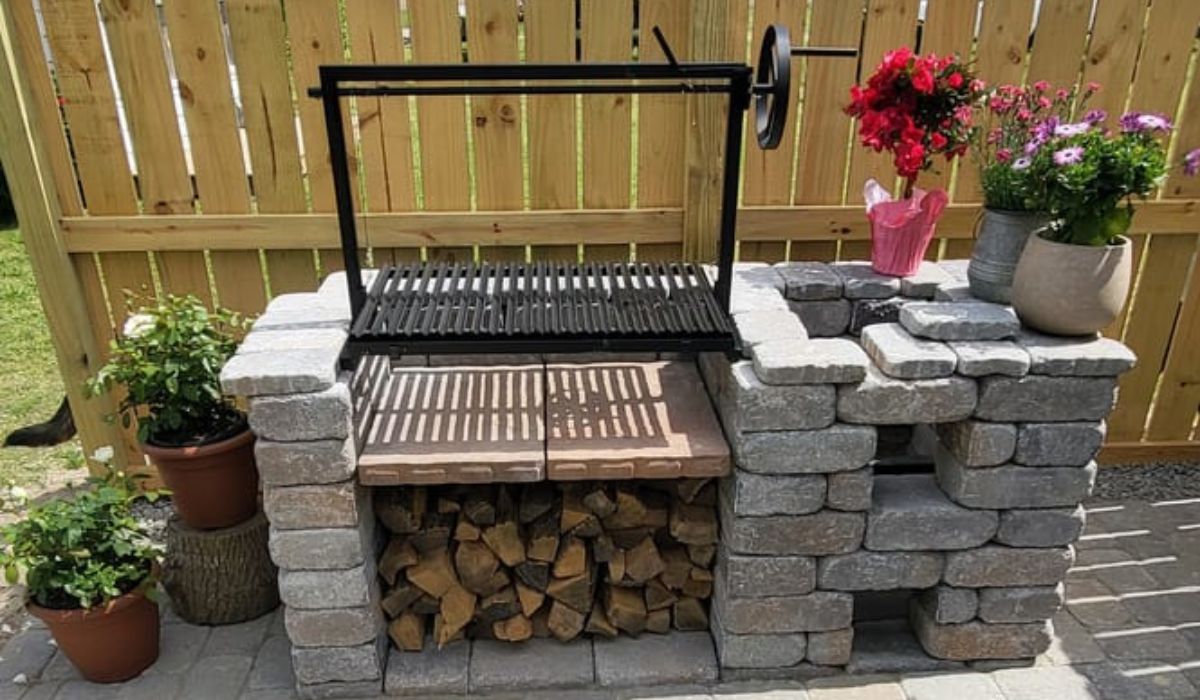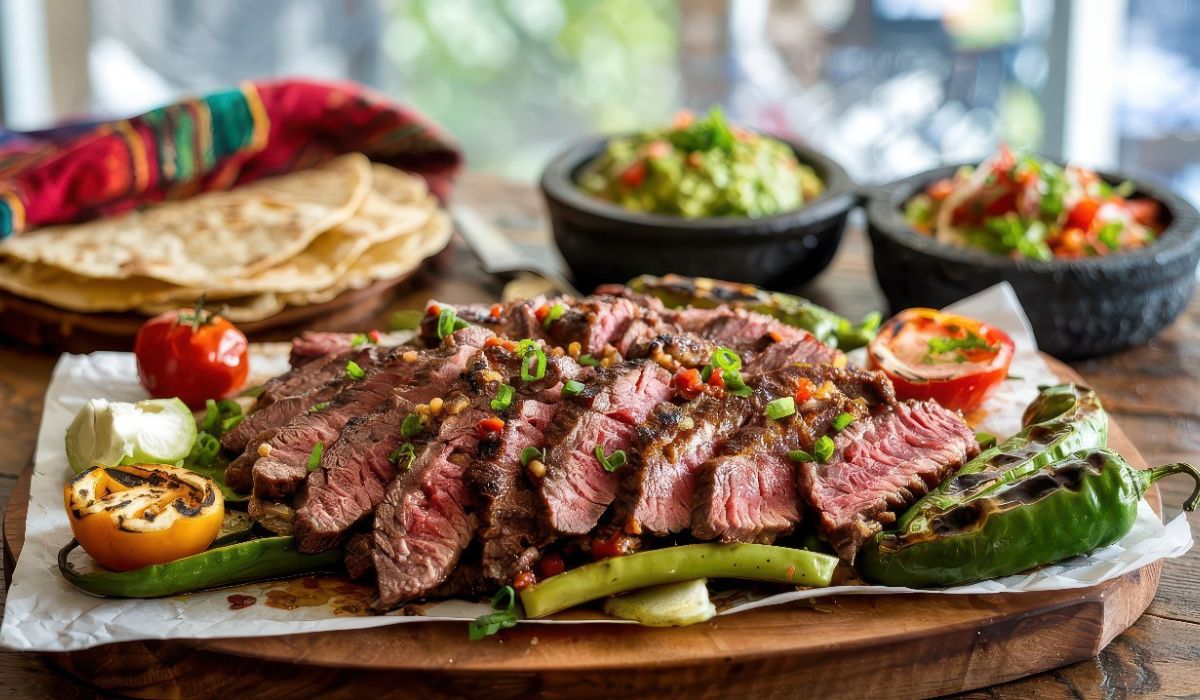
Best Argentinian Grills at Gaucho Life
In Argentina, we like to say (with good reason) that our beef is among the best in the world. And when you’re working with top-tier cuts, ordinary tools just won’t cut it. You need to rise to the occasion.
That’s why the best Argentinian grills are built to the highest standards, designed with the materials and features needed to cook an asado fit for the gods.
Keep reading to discover what makes Argentinian parrillas truly unique, which models and materials stand out, and how to choose the grill that’s right for your setup. The asado experience, right at your fingertips!
What Defines the Best Argentinian Grill
There are grills... and then there are Grills, worthy of a capital “G.” Argentinian parrillas are just that: an outstanding blend of tradition, craftsmanship, social connection, and fire-fueled cooking rooted in Argentinian barbecue culture..
In Argentina, a grill isn’t just a tool: it’s a cultural icon. It’s tied to Sunday family gatherings, post-match meals, and to the legacy of the gauchos, those rugged horsemen of the Pampas who chased freedom and, often, a hearty asado.
The Argentinian grills honor this heritage through thoughtful design and durable materials. They retain steady heat for hours, offer generous cooking space for a wide range of cuts, and give you precise control over searing and temperature. To see this in contrast with another wood‑fired tradition that emphasizes different fire control and flavor - check out Santa Maria vs. Gaucho Style for a deep‑dive.
Whether you’re a seasoned asador or just getting started, a well-built parrilla delivers exceptional results without the hassle of constant fire-tending or high-maintenance upkeep. In short, they take the entire grilling experience to a new level.

What Makes a Grill Truly Argentine
At its core, there are three essential components that define the best Argentinian grills:
-
A side brasero
-
An adjustable-height grate system.
These elements work together to create efficient, easy-to-use grills that embody the philosophy behind Argentine cooking: quality meals, calculate meat for an asado, prepared with care, and savored every step of the way.
If you’re new to parrillas, you might be wondering what these components are and why they matter. Here's a quick breakdown:
-
V-shaped grates. Instead of the round or rod-style grates found on most American grills, Argentinian grills feature V-shaped grooves that channel fat drippings away from the fire. This reduces flare-ups and avoids the bitter smoke that can affect flavor, helping you get a cleaner, more refined taste.
-
Brasero. Argentine grilling style requires a steady supply of white-hot embers for tender, flame-free cooking. How to achieve this efficiently? A dedicated iron firebox (brasero), which you can use to burn logs down neatly, keeping flames away from the meat to prevent drying or charring.
-
Adjustable-height grates. Similar to Santa Maria grills, top-quality parrillas include a crank-operated elevation system. This lets the asador raise or lower the grate with precision, controlling heat intensity with ease and precision.
In short, the best Argentinian grills are engineered for control, flavor, and simplicity. This makes them the perfect foundation for the hardwood-fueled, slow-paced grilling style that defines Argentine cuisine.
Pro tip → Wondering Smoker vs. Grill for your backyard? This quick guide helps you pick the right path: Smoker vs. Grill.
The Best Types of Argentinian Grills for Home Use
Argentinian parrillas come in a variety of formats: from simple grills you can move around to built-in setups favored by those who live for (and plan around) their weekly asados. Choosing the right model is no small thing: the grill you go with will shape not just how you cook, but the kind of experience you build around the fire. To dive deeper, explore how to choose the best gaucho grills.
Since a grill can be a significant investment, it’s worth considering factors like ease of fire management, available space, and how often you’ll use it. That way, you can choose a grill that fits your cooking style and your needs.
Some of the best Argentinian grill models for U.S.-based asadores include:
-
Traditional parrillas. Ideal for purists seeking the full gaucho grill experience. These models include the three key features of Argentinian grills: a side-mounted brasero for burning wood, V-shaped grates, and a crank-lift system. They require more space and take time to master, as fire tending is part of the ritual.
-
Built-in models. For a premium look and added comfort, a parrilla can be built into a brick or masonry structure, creating a custom backyard fixture. This option involves higher upfront costs and installation, but it's ideal if you're grilling under a gazebo or need a protected space, so it’s best for dedicated grillers seeking a permanent setup.
-
Freestanding parrillas. A portable take on the traditional parrilla, these models let you reposition the grill around your yard as needed. They offer advanced features (like shelves, crank systems, and braseros) without requiring a fixed installation. Just be sure to choose one made with weather-resistant materials, like stainless steel, and solid welds for long-term use.
-
Santa Maria style. The santa maría grills combine the adjustable grate system of classic Californian grills with Argentinian essentials like V-shaped grates, an open frame, and side braseros. They offer precise heat control and are beginner-friendly. This style is especially well‑suited for standout cuts like the Santa Maria Tri‑Tip, offering precise heat management and ease for both novice and seasoned asadores.
-
Tabletop grills. Also known as chulengos, these compact models are ideal for small spaces like apartment balconies. While they’re too small for large cuts, they’re perfect for choripaneadas with a few friends or grilling side dishes. Choose cast iron for heat retention, or thick stainless steel for easier cleanup with reliable performance.
| Grill Type | Description | Best For |
|---|---|---|
| Santa María-Style Grill | Flat grate, adjustable height, open-face firebox | Enhanced fire management, American-Argentine hybrid style |
| Traditional Parrilla with Brasero | Side firebox, V-grates, chain/lift system | Purists who want full Argentine experience |
| Built-in Parrilla | Integrated into masonry or outdoor kitchen | Permanent setups and design-conscious homes |
| Freestanding Parrilla | Metal structure with wheels, movable | Flexibility in patios and outdoor spaces |
| Tabletop Parrilla | Compact, for small spaces or travel | Urban grills, balconies, or secondary grill |
Why Materials Matter: Iron vs. Stainless Steel
When it comes to building or buying a parrilla, material choice isn’t just about aesthetics: it directly impacts performance, durability, maintenance, and the kind of grilling experience you’ll enjoy.
No matter the model, the best Argentinian grills feel solid and deliver consistent results. Quality parrillas are typically crafted from stainless steel or cast iron, both known for their strength, heat control, and longevity. Each material brings its own set of pros and cons:
Stainless Steel – Pros
-
Highly resistant to rust, even in tough weather conditions
-
Low maintenance and easy to clean
-
Sleek, polished appearance
-
Lighter weight for easier handling
Cast iron – Pros
-
Excellent heat retention for slow, even cooking
-
Grates become seasoned over time, enhancing flavor
-
Traditional look and feel that appeals to purists
Stainless Steel – Cons
-
While durable, it doesn’t retain heat as well as iron
-
Can warp over time when exposed to direct flame
-
Generally more expensive, making warping a bigger issue
Cast Iron – Cons
-
Prone to rust if not properly cleaned, seasoned, and stored
-
Heavier than steel, making it harder to move or reposition
At Gaucho Life, we carefully match each material to its ideal function, taking full advantage of its strengths. For instance:
-
Our freestanding grills and Santa Maria grill inserts are crafted from stainless steel for long-term weather resistance and ease of use.
-
For open-fire cooking stands and side braseros, we favor iron, maximizing its heat-holding power and traditional character, while minimizing its drawbacks through thoughtful design.
Pro tip → Thinking about elevating your asado even further? Pair your new parrilla with Argentine Cross-Style BBQ to roast large cuts vertically, combining fire control, tradition, and flavor.”
Accessories that Make the Difference
When it comes to Argentinian grilling, it’s not just about the meat or the fire: it’s about how you engage with the parrilla, expanding the possibilities of open-fire cooking. And the right accessories make all the difference.
Essential grill tools like a shovel and poker act as the hands of the asador, giving you precise control over the fire:
-
Use the shovel to move embers beneath the grill and create distinct hot and low-heat zones, for an asado with a wide variety of cuts.
-
The poker helps you stoke the flames and shift logs without collapsing the fire’s structure.
Even the best Argentinian grill is elevated by a plancha or griddle, perfect for foods that need a solid cooking surface. It delivers a deep-sear, rich, smoky flavor, and prevents small items or juices from falling through the grate. Think provoleta, scrambled eggs, or fajitas. The possibilities are endless!
Another great addition is an iron basket: a wire cage that locks food, such as grilled vegetables, between two grates, allowing you to flip everything at once without it falling apart. Other essential tools for grilling include:
-
A meat hook for flipping larger cuts without tearing.
-
Long, heavy-duty tongs.
-
A proper carving knife forged from stainless steel.
-
A grill brush with stainless or brass bristles, for cleanup.
To turn everyday grilling into a true occasion, add thoughtful touches like wooden cutting tables for carving in front of guests, and rustic bowls for chimichurri, fresh bread, salad, and other sides.
Finally, if your parrilla doesn’t include one, consider adding an argentine brasero. It improves fire control and helps protect the grill from direct flame damage.

FAQs
Curious about Argentinian grills? Here are answers to some of the most common questions we hear. If yours isn’t listed, feel free to reach out. We’re always happy to help!
What is the Best Type of Argentinian Grill for Beginners?
If you're just getting started with the asado lifestyle, look for a freestanding or tabletop parrilla with V-shaped grates and a crank system. This setup makes fire management easier and safer. Opt for a simple design that doesn’t require a permanent installation.
Do Argentinian Grills Use Charcoal or Wood?
Traditionally, Argentinian grills are fired with wood, preferably hardwoods like quebracho or oak, for deeper flavor and a more authentic experience. That said, charcoal is a convenient alternative, especially for beginners or when time is tight.
What’s the Difference Between Santa Maria Grills and Argentinian Grills?
While both use similar elevation control methods, Argentinian grills feature V-shaped grates and are built for cooking over embers. Santa Maria grills lack the V-grates and are designed for cooking directly over open flame.
Are these Grills Only for Meat?
Not at all. Although they’re built with beef in mind, a quality Argentinian grill handles veggies, sausages, cheeses, breads, and more, especially when paired with a basket or griddle.
Where Can I Buy a Parrilla Grill?
You can find high-quality Argentinian parrillas at specialty retailers like Gaucho Life. Handcrafted in Argentina, our grills meet rigorous quality standards and bring South American tradition to life, right in your backyard.
If you’re just starting out, the Beginner’s Guide to Grilling by Gaucho Life will help you understand what features really matter - from grates and brasero to adjusting height and handling ember heat.
From Argentina, with Love
From the gauchos of the pampas to modern-day city dwellers, every Argentinian worth their salt has a grill close to the heart. These grills aren’t just for the countryside: they’ve evolved, blending tradition and craftsmanship into a centerpiece for any home where meals are n’t simply served, but celebrated.
Ready to fire up an asado of your own? Bring the authentic Argentinian grilling experience to your backyard with one of our handcrafted parrillas. At Gaucho Life, we dream, design, and build high-quality grills with precision and care, so every fire delivers unforgettable flavor.
Explore our Santa Maria grill and Gaucho Grill collections. Find the best Argentinian grill of a lifetime, and take your outdoor meals to the next level.
Because, at Gaucho Life, we know it’s not just about grilling. It’s about the lifestyle.





Dejar un comentario
Este sitio está protegido por hCaptcha y se aplican la Política de privacidad de hCaptcha y los Términos del servicio.